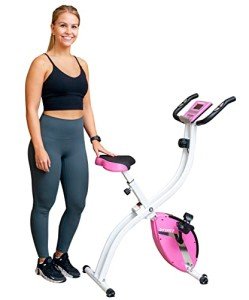The Rise of Stationary Bikes: A Comprehensive Guide
In recent years, stationary bicycles have risen in popularity, becoming a staple in homes, health clubs, and fitness studios. Their convenience, flexibility, and effectiveness in offering an exceptional cardiovascular workout make them an attractive alternative for fitness lovers of all levels. This article explores the types, benefits, features, and considerations regarding stationary bicycles, ensuring you have all the information you require to make an informed decision on this vital fitness equipment.
Kinds Of Stationary Bikes
Before buying a stationary bike, it's necessary to understand the various types offered, each dealing with differing fitness objectives and preferences.
1. Upright Bikes
Upright bikes look like traditional bicycles and are suitable for a more extreme workout. Riders sit in an upright position, engaging their core and leg muscles.
2. Recumbent Bikes
These bikes feature a reclined seating position that offers greater back support. They are ideal for those with back issues or individuals searching for a more comfortable pedaling experience.
3. Spin Bikes
Created for cycling lovers, spin bikes provide a more extreme workout experience, often found in group classes. They include a heavy flywheel and adjustable resistance, permitting a vigorous workout.
4. Folding Bikes
For those with minimal space, folding bikes supply a compact solution. Look For Exercise Bikes can be quickly kept away when not in usage, making them best for house residents or periodic users.
5. Smart Bikes
Leveraging innovation, clever bikes connect to apps or virtual cycling platforms, using interactive workouts, live classes, and efficiency tracking.
Advantages of Stationary Bikes
Purchasing a stationary bicycle offers many health and fitness benefits. Here are some reasons why one may consider adding this piece of equipment to their routine:
1. Cardiovascular Health
Routine cycling can efficiently improve cardiovascular fitness, helping to strengthen the heart, boost lung capability, and enhance flow.
2. Weight-loss
Stationary cycling can assist in burning calories and shed excess weight. Depending on the intensity, an individual can burn between 400 and 600 calories in an hour.
3. Low Impact
Cycling is low-impact, making it ideal for individuals with joint issues or those going through rehab. It enables a safe workout without putting undue tension on the joints.
4. Strengthening Muscles
Cycling works numerous muscle groups, especially the legs, glutes, and core. With time, it enhances muscle tone and strength.
5. Versatility and Balance
Routine usage of a stationary bicycle can enhance overall flexibility and balance as it motivates better posture and core engagement.
6. Practical and Flexible
One of the biggest advantages of stationary bikes is the ability to exercise on your schedule. There's no need to commute to a gym; you can ride in the house, whenever of day.
Functions to Consider When Choosing a Stationary Bike
When picking a stationary bicycle, several key functions should be taken into consideration to guarantee you get the best value and performance for your requirements.
1. Adjustable Resistance
Buy a bike with adjustable resistance levels. It permits you to tailor your workout strength as you advance in your fitness journey.
2. Ergonomic Design
Pick a bike that provides adjustable seat height and position to preserve comfort during exercises. An ergonomic style decreases the threat of injury.
3. Home entertainment Options
Consider bikes with integrated speakers or compatibility with music devices. This feature can help make workouts more satisfying, particularly throughout longer sessions.
4. Display Console
A good screen console tracks vital metrics such as time, range, speed, and calories burned. Some advanced designs may also keep track of heart rate and sync with fitness apps.
5. Rate and Warranty
Stationary bicycles been available in a variety of costs. Set a budget plan and try to find models that provide a service warranty, guaranteeing you are covered in case of mechanical issues.
FAQs About Stationary Bikes
Q1: How typically should I use a stationary bike for ideal outcomes?
A1: For optimum fitness outcomes, go for at least 150 minutes of moderate-intensity cycling weekly. This relates to about 20-30 minutes per session, 5 days a week.
Q2: Can stationary bikes assist develop muscle?
A2: Yes, while stationary bicycles are mostly utilized for cardiovascular workouts, they can likewise assist tone and strengthen the legs and core muscles, especially with increased resistance.
Q3: Are stationary bikes ideal for beginners?
A3: Absolutely! Stationary bicycles can accommodate various fitness levels, with adjustable resistance settings and comfy seating alternatives that make them beginner-friendly.
Q4: Do I require a special kind of bike for indoor cycling classes?
A4: While standard stationary bikes can be used for indoor cycling classes, spin bikes are typically preferred for their much heavier flywheels and greater levels of resistance.
Q5: How can I make the many of my stationary bicycle workouts?
A5: To maximize your outcomes, consider blending various workout regimens, such as interval training, steady-state trips, and strength-focused cycling sessions.
Stationary bikes are an outstanding addition to anybody's fitness regimen. They provide a flexible, efficient, and low-impact method to improve cardiovascular health, strengthen muscles, and assist in weight management. With different types and features available, it's important to evaluate private requirements, choices, and budget plan before making a purchase. Eventually, integrating a stationary bicycle into your routine can be a considerable step towards a healthier, more active way of life.

